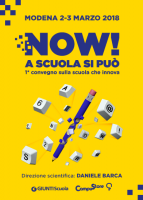 You may have heard that it’s best to “ease” into hands-on project-based learning at the start of the school year. Maybe you feel your students aren’t ready, need some skills development, or just need to have a few weeks of settling down before getting started with more independent work.
You may have heard that it’s best to “ease” into hands-on project-based learning at the start of the school year. Maybe you feel your students aren’t ready, need some skills development, or just need to have a few weeks of settling down before getting started with more independent work.
I think this is a big mistake.
Why? Two reasons: habits are formed and messages matter starting day one.
If you are looking at making and makerspace activities as a way to give students more agency over their own learning, why not start building those habits immediately to send that message early and often.
Many teachers feel that they have students who aren’t ready for a more independent approach to learning. However, how will they get ready if they don’t practice it? Many teachers say that students have to be “unschooled” out of practices like constantly expecting to be told what to do. So why not start to build those habits and expectations on day one?
That doesn’t mean that you have to start with a monumental project. Start with something small. Shorter, more contained projects will build their confidence and skills. Mix these projects with less structured time to explore, invent, and tinker. If it’s chaos, you can add some constraints, but don’t give up!
Empowering students to believe in themselves as capable of making things that matter, both in the physical and digital world, is a crucial part of learning.
The message is also going home to parents every day — what they expect to see all year starts today. Explain what you are doing and why, and reinforce that with every communication with parents.
So whatever you call it, making, project-based learning, hands-on, or inquiry learning – the time to start is always NOW!
 ICE 2018 – Feb 26 (Chicago) I’m part of an “All-Star” lineup of presenters who are participating in the Illinois Computing Educators conference. Instead of one keynote they are bringing back keynotes from previous years to do panels and featured presentations. It’s a bit embarrassing to call yourself an “All-Star” but that’s their term, not mine! Check out the whole list and join us!
ICE 2018 – Feb 26 (Chicago) I’m part of an “All-Star” lineup of presenters who are participating in the Illinois Computing Educators conference. Instead of one keynote they are bringing back keynotes from previous years to do panels and featured presentations. It’s a bit embarrassing to call yourself an “All-Star” but that’s their term, not mine! Check out the whole list and join us!


 You may have heard that it’s best to “ease” into hands-on project-based learning at the start of the school year. Maybe you feel your students aren’t ready, need some skills development, or just need to have a few weeks of settling down before getting started with more independent work.
You may have heard that it’s best to “ease” into hands-on project-based learning at the start of the school year. Maybe you feel your students aren’t ready, need some skills development, or just need to have a few weeks of settling down before getting started with more independent work.